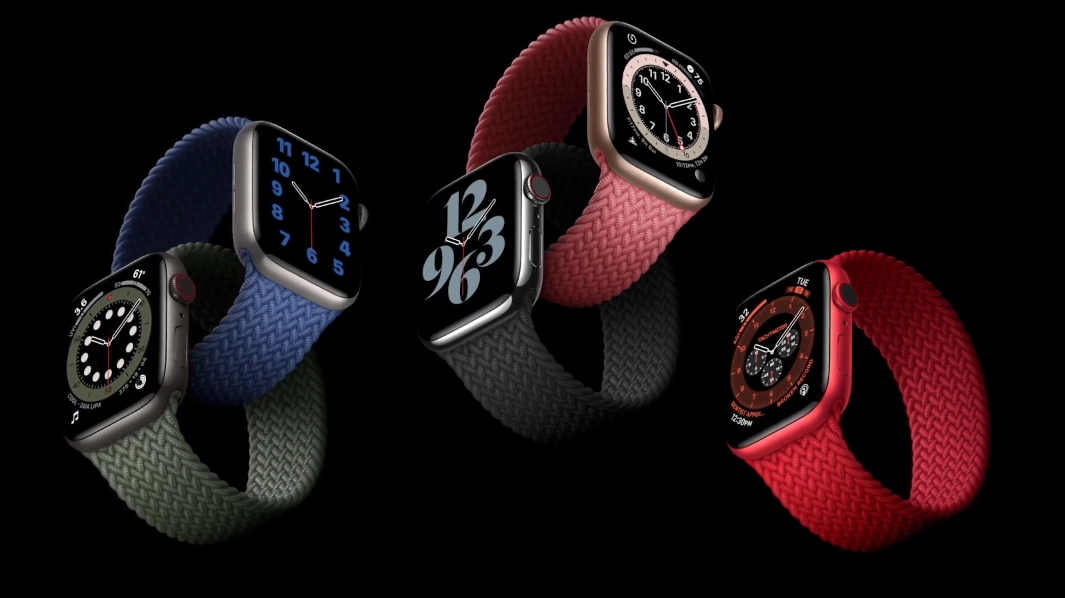
Apple Watch 6 release date, price, news and blood oxygen monitoring
The new Apple Watch Series 6 is here - but is blood oxygen monitoring enough?
by James PeckhamThe Apple Watch Series 6 is official, and it's the company's (as you can guess) sixth-generation smartwatch. It's designed to be the best thing that Apple's ever strapped to your wrist, but to the outside viewer, it doesn't seem like that much has changed.
However, there's a new engine inside - the S6 chip - that brings a few more features into the mix, and combined with WatchOS 7 we're seeing the most advanced wearable from Apple yet.
The key improvement is blood oxygen monitoring, which shows the level of that all-important air in your blood stream, as well as an altimeter to see how high or low you are, to the nearest foot.
There's improved performance in terms of battery life as well, thanks to that new chipset, and a flurry of new faces and bands (although, admittedly, these will apply to the Apple Watch 5 and prior models).
It was joined at the Apple event launch by the new Apple Watch SE - it's a cut-down version of the Apple Watch 6, but loses the always-on display, the S6 chipset and the blood oxygen monitor. But weirdly, does keep the altimeter so you know your elevation at any given moment.
- There wasn't an iPhone 12 at the Apple event, but instead we got the iPad Air 4 and a new cheaper iPad as well as new services like Apple One and Apple Fitness Plus.
Cut to the chase
- What is it? The next wearable from Apple
- When is it out? Pre-orders now, out Friday, September 18
- What will it cost? From $399 / £379 / AU$599
Apple Watch 6 release date and price
The Apple Watch 6 was unveiled at the company's Time Flies event on September 15, 2020, a live streamed virtual event due to the Covid-19 pandemic.
You're able to pre-order the Apple Watch 6 now, and the smartwatch will be out on Friday, September 18.
The Apple Watch 6 will start at $399 / £379 / AU$599 for the 40mm version, and the 44mm version starts at $429 / £409 / AU$649.
If you want an LTE-ready watch, the 40mm starts at $499 / £479 / AU$749 with the 44mm starting at $529 / £509 / AU$799.
Apple Watch 6 design and display
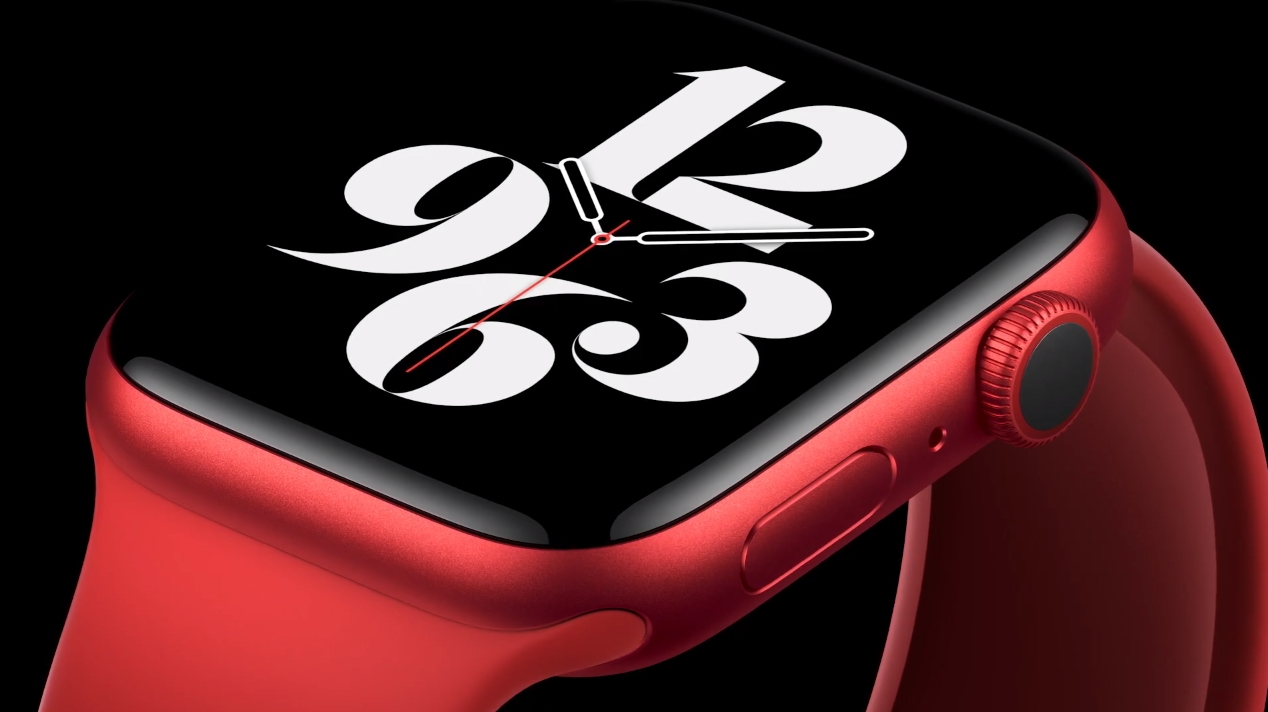
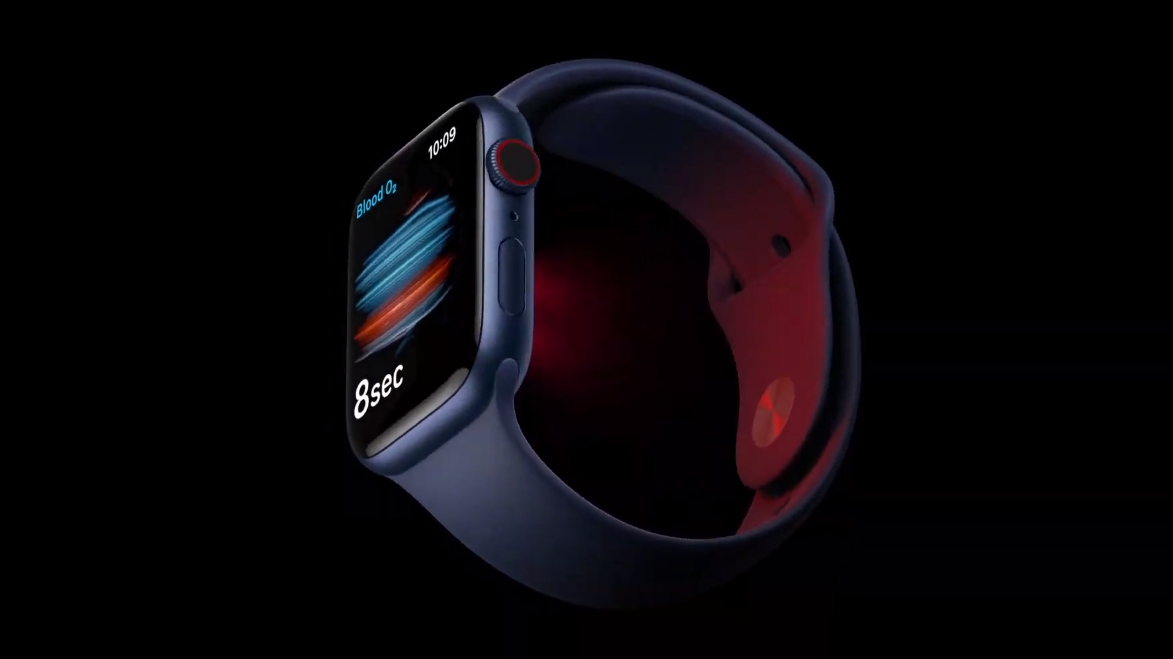
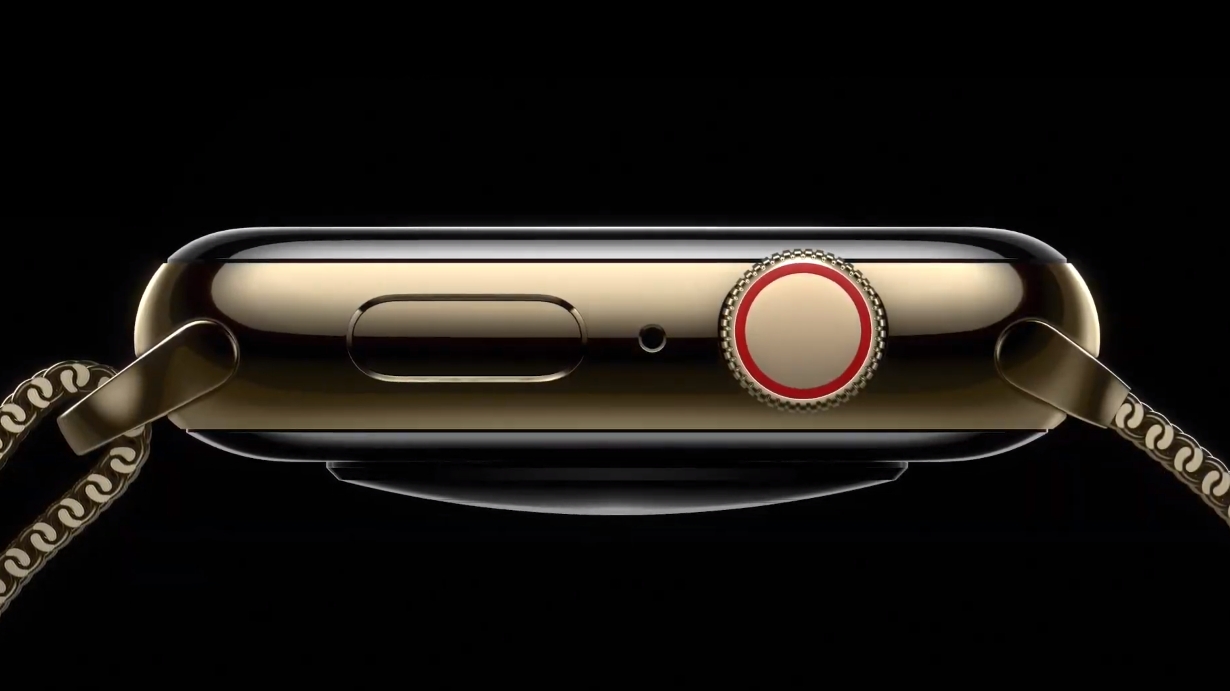
Don't expect the Apple Watch 6 to look different to the Apple Watch 4 or Apple Watch 5. The company is keeping the same design ethos for the Apple Watch 6, but there are some changes in terms of colors available.
It now includes a new blue aluminum case as well as a gold version of the stainless steel variant. There's also a black graphite variant, and a (PRODUCT) Red version for the first time - with the latter option likely to garner a lot of interest.
It'll be available in both 44mm and 40mm sizes like the last couple of Apple Watch generations too.
The always-on display is back, and it's been improved for the Apple Watch 6 - marginally. The change comes in the outdoor conditions, where the watch is able to boost 2.5 times brighter, allowing you to see your heart rate, elevation and blood saturation when in the direct, bright sunlight.
Plus, you can access the Notification Center, Control Center, change watch faces, and tap on complications from the always-on display, without having to fully wake the watch.
Apple also announced a variety of new band types, including new colors for existing straps. There are two new band styles called the Solo Loop and the Braided Solo Loop, both of which don't have clasps, allowing you to stretch the band over your wrist.
That's a weird one - there are nine sizes available, and you can either get sized in an Apple Store (where it's safe to do so) or print out a sizing chart and measure yourself from the comfort of your own home to find the right Solo strap for you.
Apple Watch 6 fitness
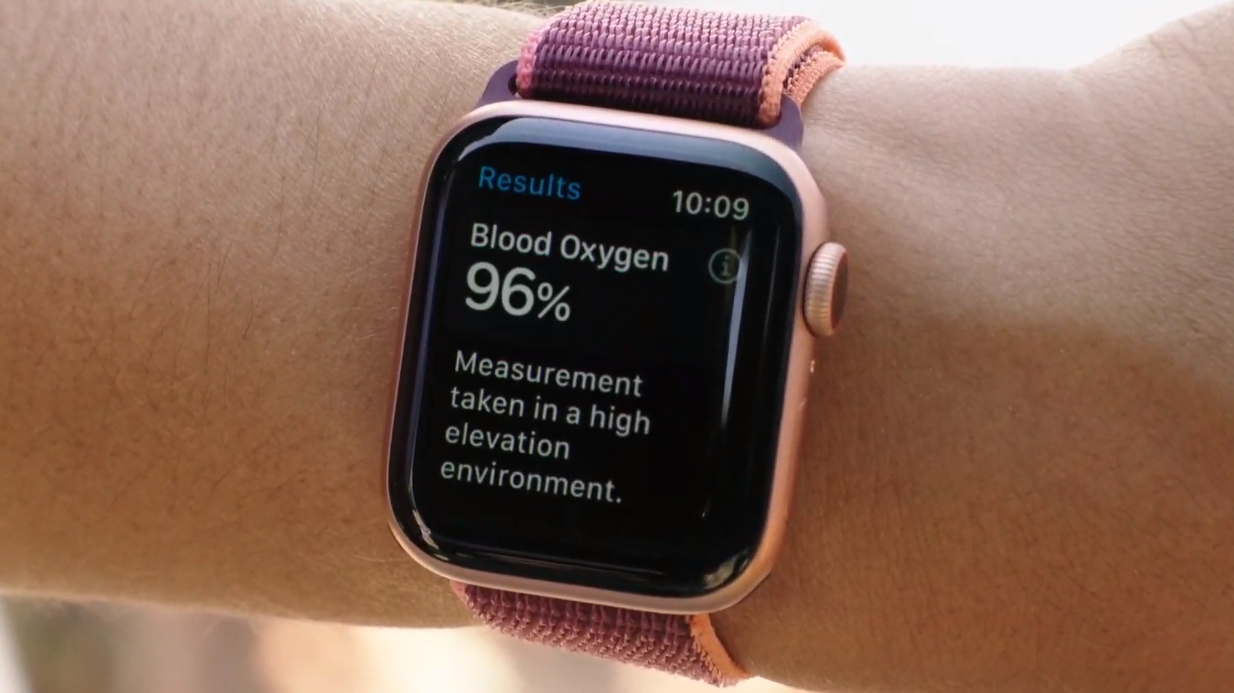
There's a new health sensor in the Apple Watch 6 that allows you to monitor your blood oxygen levels. It all works through the Blood Oxygen app on the watch, which can take a reading within 15 seconds.
This happens by the new Apple Watch firing red and infrared light into the skin, and the Watch 6 being able to see the color of the blood to give an indication on how your oxygen levels are going at that point.
The watch can also take background readings, so you'll be able to get results while you sleep or throughout the day. Those results will allow you to look out for low blood oxygen levels, which could be an indication of underlying health problems.
However, there's a bigger question mark with the new Apple Watch 6's new sensor: what's it there for? It's there for wellness, not for use in a clinical sense, which means that it's basically a curio more than anything else.
Compare that to the decibelmeter that debuted in recent Watch models, which gives guidance on when to be more smart in loud environments, and apart from the interesting element of noting your blood oxygen level, there's not too much the average person could learn from this sensor.
One suspects that there's more to come from the blood oxygen-tracking capabilities of the Apple Watch - otherwise it's an odd headline feature to bring.
Apple Watch 6 power and battery
Apple has included a new S6 processor in the smartwatch, which is up to 20% faster than the Watch 5's chipset.
On top of that, Apple also claims you get 18 hours of battery life (the same as the Apple Watch 5) but with faster charging, letting you juice it up in under 1.5 hours.
It's a surprise that the Watch doesn't last a little longer, now that sleep tracking is on board, but we've often found that the device will outlast the 18-hour window Apple gives it. The Apple Watch 6 will also last an hour longer on GPS and when listening to music - given those are power-hungry actions, it should let most 'hard' users make it easily through to the evening.
There's also an always-on altimeter on the new smartwatch, which provides you with real-time elevation data throughout your day. Apple says it'll even detect small elevation changes down to a measurement of one foot.
Wi-Fi connectivity has been improved too, allowing users to connect to the 5GHz bandwidth for faster and more seamless streaming of data.
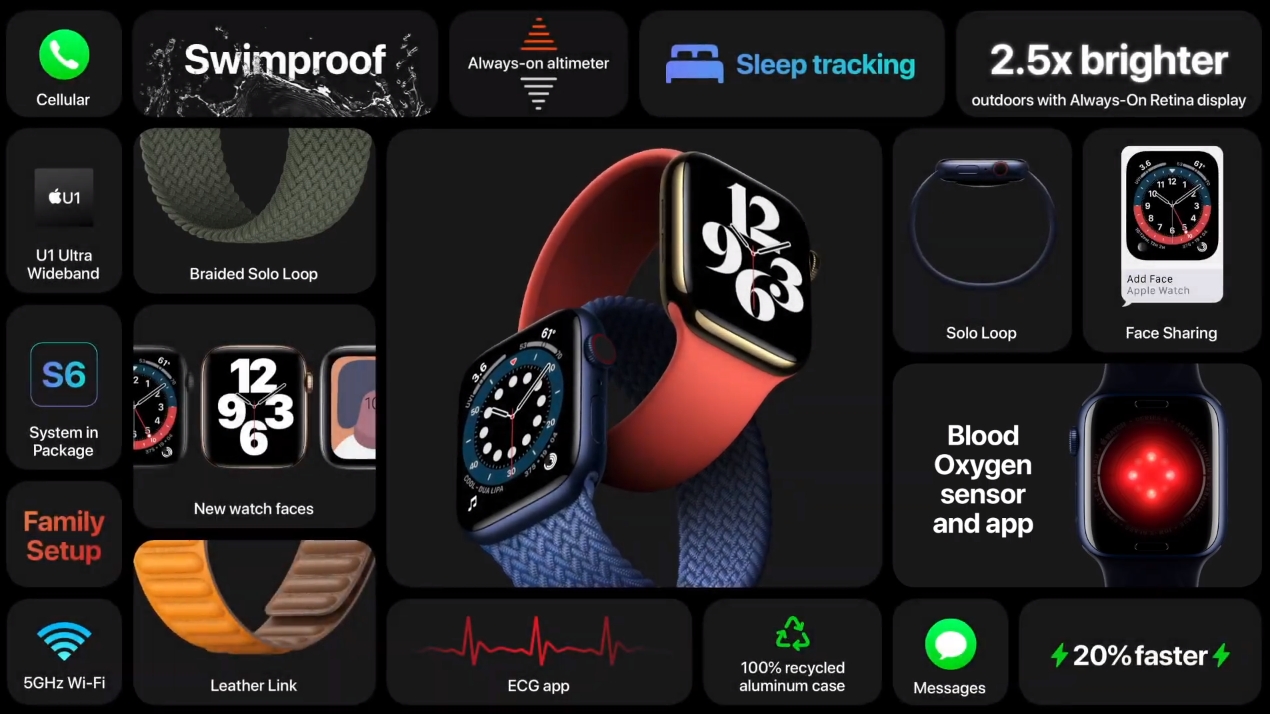
Apple also quietly revealed another feature, but only in the watch-wide feature spread rounding up the Apple Watch 6's capabilities (above). Notice in the top left corner, the U1 Ultra Wideband – that's a chip that appeared in the iPhone 11 range that's rumored to be used in the anticipated (yet unconfirmed) Apple AirTags.
These Apple accessories will supposedly use the ultra wideband frequency as a short-range yet precise communication standard for locating the Tile-like AirTags, which you'll supposedly attach to devices you don't want to lose, which will appear in the Find My apps on iPhones – and, apparently, Apple Watch 6.
Apple Watch 6 software
Of course, the Apple Watch 6 will also come with a new version of the company's software on board, specifically watchOS 7, which was unveiled back in June 2020.
With new workouts, streamlined complications, sleep tracking, hand washing tracking, and more, there's a lot planned.
Sleep tracking is perhaps the biggest update here, and suggests that the Apple Watch 6 may come with specific features that will be better at handling that than its predecessors.
WatchOS 7 can now also monitor VO2 Max numbers, which measures the volume of oxygen your blood can carry and is essentially a barometer of your fitness. The new software can also let you know when it's starting to decrease, which might prompt some to pick up the dumbbells again and get lifting.
Apple Watch 6 watch faces
Seven new watch faces are coming with Apple Watch 6 – here's a list of them, along with images:
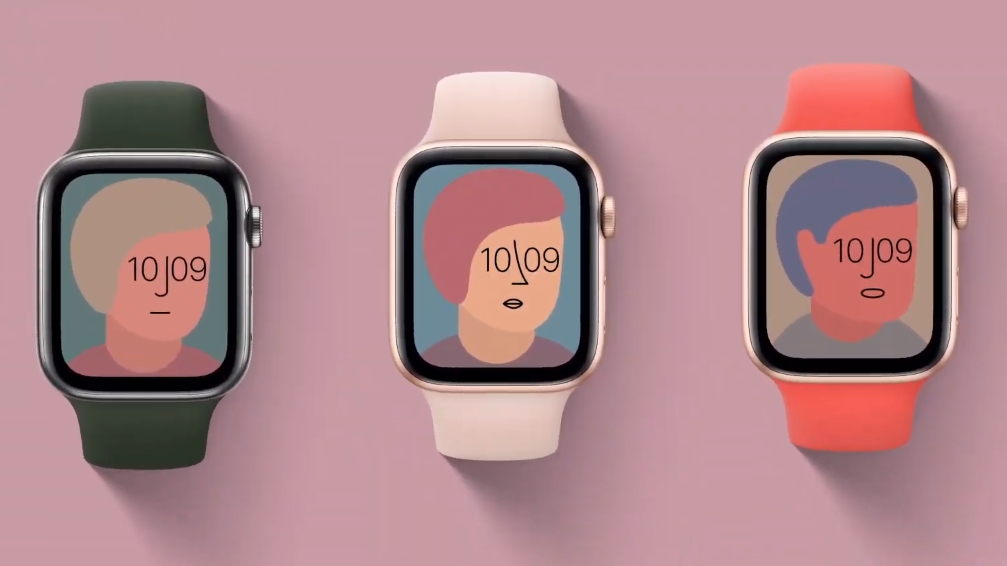
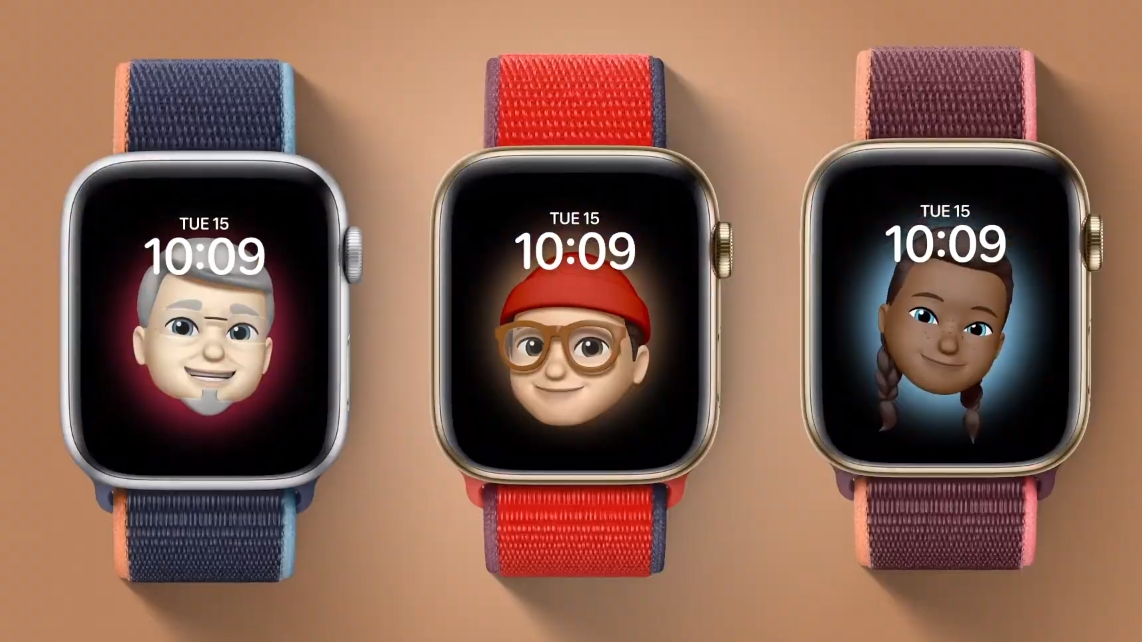
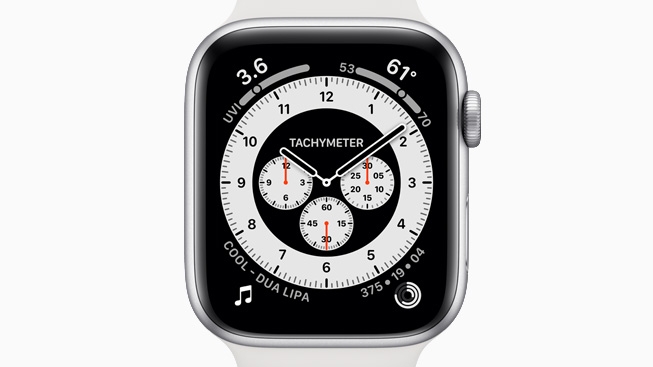
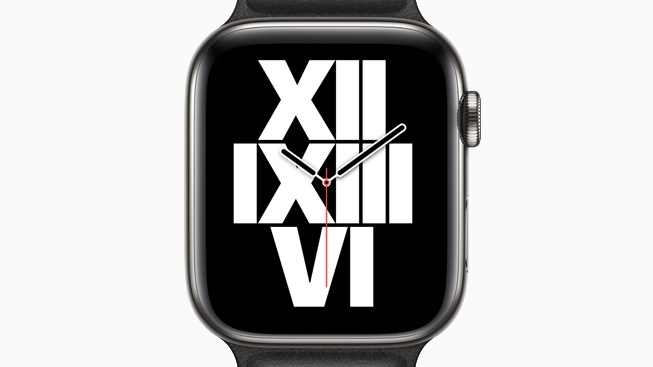
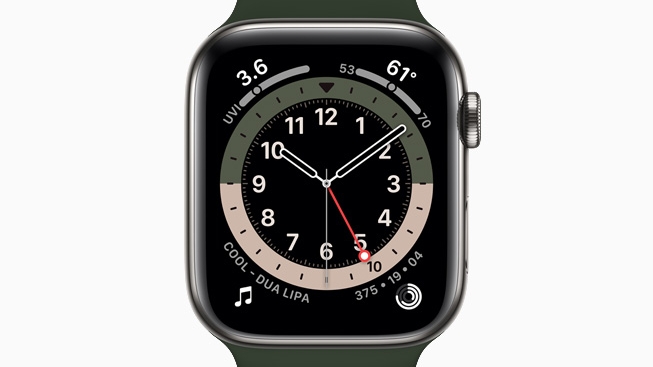
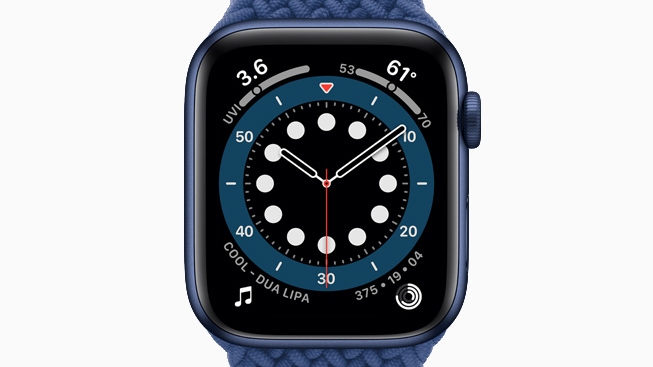
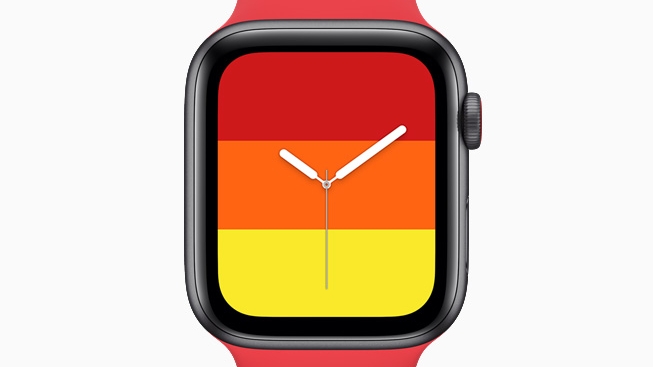
Note that these are part of watchOS 7, so won't be exclusive to the new Apple Watch. The new software also lets you share your watch face configurations with other people so you can show off how creative you are with your tiny little computer on your wrist.
- Got an Apple Watch already? Stock up on the best Apple Watch apps